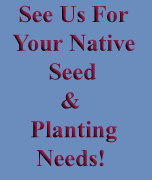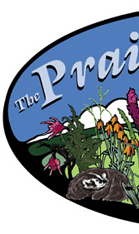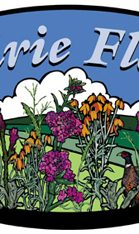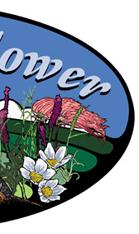





HOW TO ORDER |
|
Planting & Maintenance Information:
Step 1: Planning Consider all aspects of the site you plan to plant. Whether you begin with seed or plants, you should understand soil type, moisture, sunlight, slope, and the size of the area. From this understanding you can choose the plants appropriate for you. You may want to refer to a field guide[eventual link to books page] to prairie plants, scroll through the plants[link to plants page] on our website, or consult with our ecologist[link to email] about which plants or seeds and how many you will need. Step 2: Preparation While plants become established, the common annual weeds in your area will undoubtedly share space in your garden or prairie planting. Weed control must begin before planting. Spraying, smothering, tilling and hand weeding are ways to control competitive vegetation. The size and location of your planting project will determine which method is best. Seed bed preparation is equally important. Planting into sod is possible, with a seed drill or aggressive raking. A loose soil bed must be made firm, so that your foot sinks less than ¼ inch. If you intend to mow in the future, a nice level surface is a good idea. Step 3: Planting The best times for seeding in northern Iowa are mid to late spring and fall. Most prairie seeds germinate in soil that is 60 degrees F. or warmer. The advantage to late spring planting is that weeds that pop up in April and May can be destroyed before planting, giving your natives a competitive edge. However, many native seeds require a period of cold, wet treatment (called stratification) in order to germinate, and fall planting allows this to happen naturally. Forbs tend to get a better start if they are seeded in the fall. Fertilization is not recommended when planting native seed. Bareroot and potted transplants can be planted from spring through late summer. The roots should be given generous space in the hole you create for them, the soil should be replaced firmly, and they should be watered during their first growing season. All of our transplants are treated briefly with rooting solution to minimize root injury and encourage root growth. These perennial plants rely on their roots to carry them through the extreme conditions they may face in the Midwest. Occasionally, especially in late summer transplants, the tops of the plants will appear to die off after planting. Watch for new growth from the base of the plant before declaring failure! Step 4: Patience and Maintenance Transplants provide the quickest gratification for native prairie planters. Weeds can be pulled or tilled around larger plants, but avoid aggressive pulling near tiny seedlings. Seeded native plants may require several growing seasons to become mature, and environmental conditions will determine the composition of a native prairie stand each year. Mowing is the most reliable way to control weeds and encourage native seedlings during the first three years of stand establishment. The planting should be mowed whenever weeds reach knee-height. Mowing height can be as low as 4-6 inches during the first year, but the size of the prairie seedlings should be considered. Root development is more critical than above ground growth at this point. Subsequent years’ mowing is usually down to 8-10 inches. In order to maintain the mature prairie, prescribed fire is highly recommended. Burning helps eliminate weeds, especially woody invaders, strengthens prairie plants, and opens up the ground level to sunlight, heat and moisture. Seeded prairies can be burned as early as the second growing season, and should be burned every 3 to 5 years, at the least. Sections of a large prairie can be burned in different years to protect insect populations. |

|
This website, and material herein are © property of The Prairie Flower, LLC
|